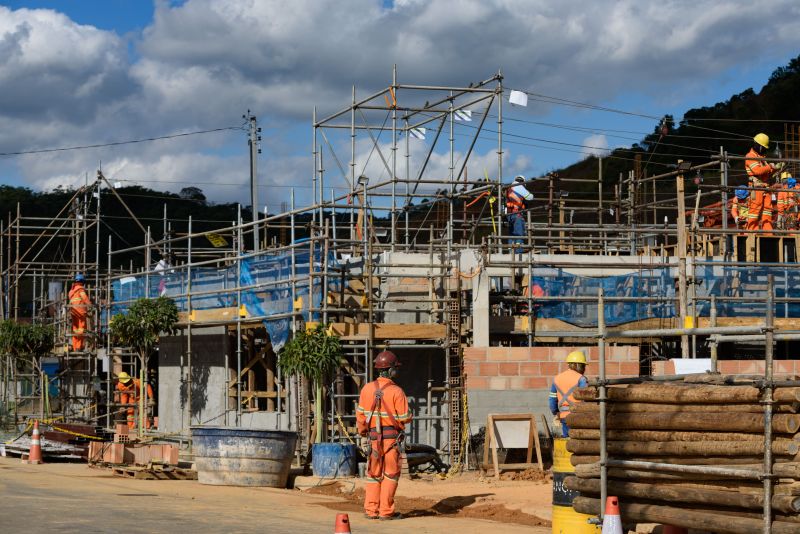In an era defined by rapid technological advancements, the integration of artificial intelligence (AI) into infrastructure management signifies a groundbreaking leap, particularly in the realm of dam safety. The looming threat posed by aging infrastructure, coupled with the unpredictable impact of climate change, underscores the urgent need for innovative solutions to mitigate the risks of dam failures.
AI emerges as a pivotal player in this landscape, harnessing vast datasets, predictive analytics, and machine learning algorithms to foresee potential failures before they escalate into catastrophic events. Imagine a future where sensor data is analyzed in real-time, providing engineers with insights that transcend mere observation—guiding maintenance efforts and fortifying safety protocols.
By transforming how we predict and prevent potential breaches, AI not only safeguards communities but also revitalizes confidence in the very structures that sustain our water resources. This article delves into the multifaceted role of AI, exploring its capabilities and the transformative impact it holds for the future of dam engineering.
Introduction to Dam Safety and the Importance of AI

In the wake of catastrophic dam failures that have resulted in loss of life and significant environmental impacts, the importance of dam safety has never been more urgent. As aging infrastructure faces increasing strain from both climate change and population growth, the stakes are high for communities residing downstream.
Artificial intelligence emerges as a transformative ally in this critical domain, offering unprecedented capabilities to monitor, analyze, and predict potential failures with remarkable precision. By harnessing vast amounts of data—ranging from sensor readings to historical failure patterns—AI can identify subtle anomalies that might elude human observation, enabling proactive measures to mitigate risks.
Thus, the intersection of advanced technology and dam safety not only enhances our understanding of potential vulnerabilities but also empowers engineers and decision-makers to safeguard communities and ecosystems alike.
AI Algorithms and Techniques in Predictive Analysis

In the realm of predictive analysis for dam safety, AI algorithms play a pivotal role, employing a diverse array of techniques to parse vast amounts of data. Machine learning models, such as neural networks, reveal intricate patterns in historical data, while decision trees offer straightforward interpretations of potential failure modes.
Coupled with advanced statistical methods, these algorithms can analyze environmental factors, water levels, and equipment conditions in real-time, enabling swift risk assessments. Notably, ensemble techniques blend multiple models, enhancing accuracy and robustness in predictions.
As a result, predictive maintenance becomes not only feasible but proactive; interventions can be strategically timed to mitigate potential failures before they escalate. The synergy of these algorithms creates a dynamic framework for understanding and thwarting the complexities of dam integrity—an endeavor that could ultimately save lives and protect vital resources.
Future Trends in AI and Dam Safety Management

As we gaze into the horizon of dam safety management, the future teems with potential, driven by the rapid evolution of artificial intelligence. Emerging technologies promise to revolutionize how we monitor and maintain these critical infrastructures.
Picture an intricate web of sensors scattered throughout a dam, each one feeding real-time data into sophisticated algorithms capable of detecting even the slightest shifts in structural integrity. Such advancements will enable predictive maintenance models to evolve, allowing authorities to not only react to but anticipate potential failures.
Furthermore, integrating AI with machine learning and geological data can enrich our understanding of environmental impacts, leading to adaptive strategies that evolve with changing climate conditions. In this burgeoning landscape, the collaboration between AI systems and human expertise will be paramount, ensuring that we not only enhance the safety of our dams but also foster a culture of proactive risk management that extends beyond traditional boundaries.
Conclusion
In conclusion, the integration of artificial intelligence into the monitoring and management of dam safety represents a transformative leap forward in engineering practices. By harnessing advanced algorithms and predictive analytics, AI can greatly enhance our ability to foresee potential failures, implement timely interventions, and ultimately safeguard communities and ecosystems.
The tragic incident at barragem de fundão underscores the critical need for such innovations in risk assessment and disaster prevention. As technology continues to evolve, it is essential that stakeholders prioritize the development of robust AI systems to ensure the integrity of our water infrastructure and protect against the catastrophic consequences of dam failures.
Embracing these advancements can lead to safer, more resilient infrastructures capable of enduring the challenges posed by climate change and increasing urban pressures.


